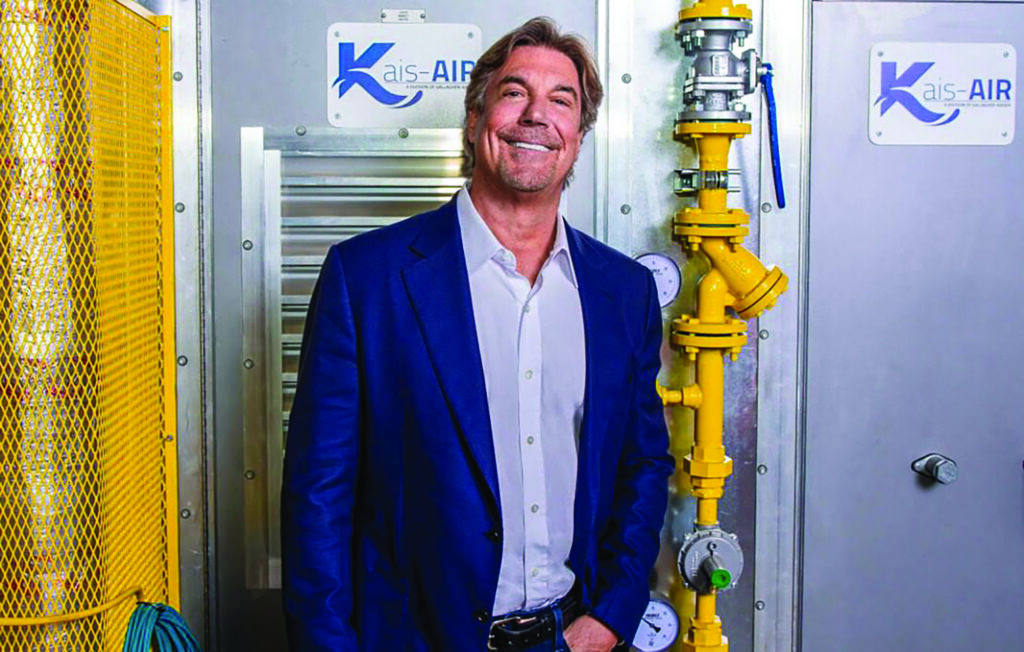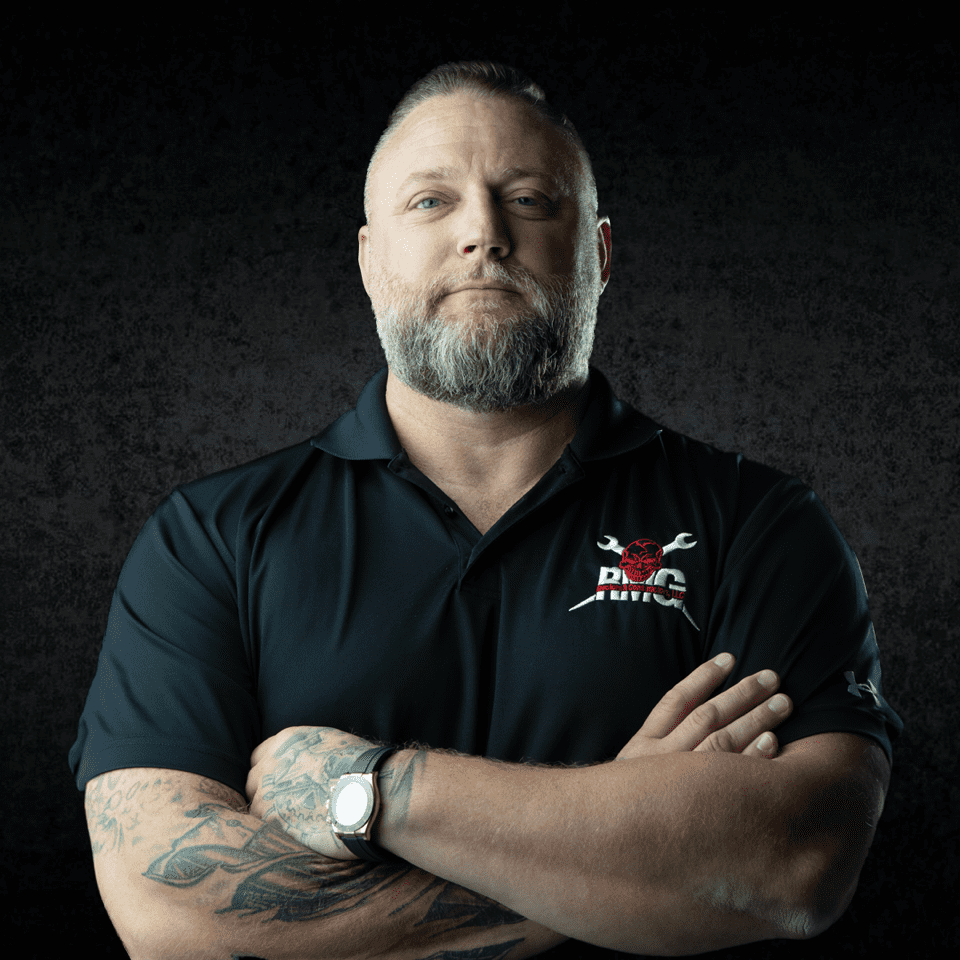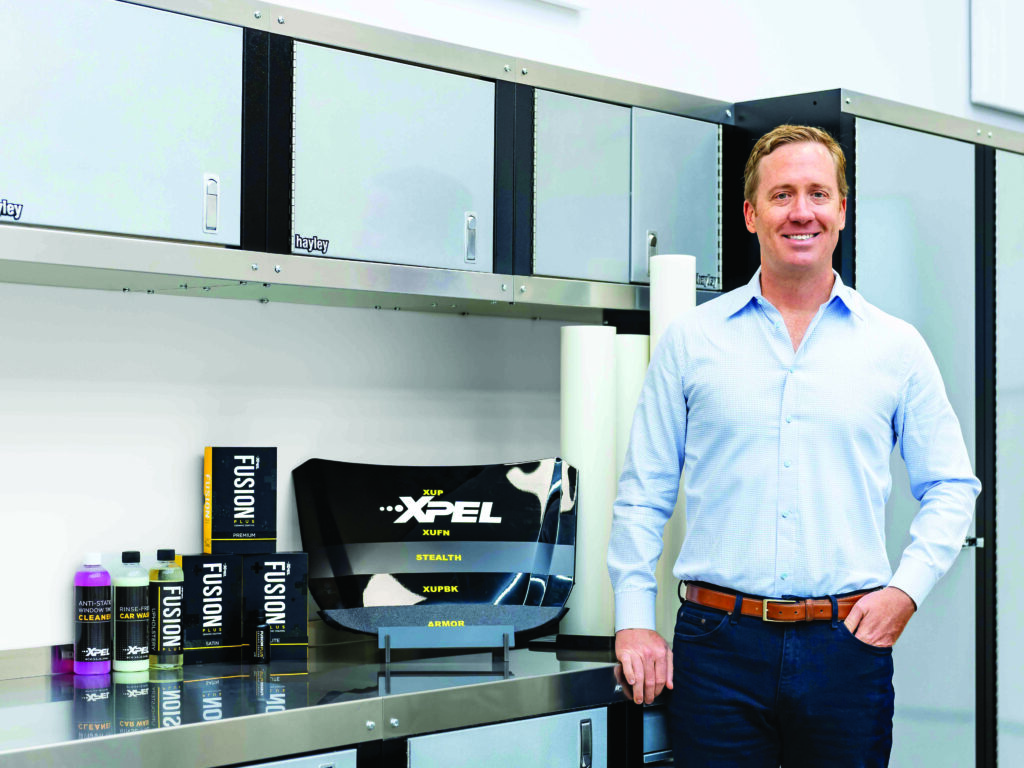“Strategic pivots” are all the rage—and a necessity for more CEOs. But how you get to the point of launching a major change in strategy, and how you execute it, can be just as important as the pivot you make.
Think about transformation decisions CEOs are making all over the place these days. They’re reacting to technology disruptions, drastic market shifts, restive customers, the accelerating swirls of domestic politics and global events—and more. These things can produce highly consequential new challenges or breathtaking new opportunities, and leaders must lean into both.
“Thirty percent of any given sector is in transformation at any given time,” says Kristy Ellmer, a managing director for Boston Consulting Group. “Companies that go into a transformation mindset when they’re in a place of strength will be more successful than if they do it reactively. And then how you execute it and move the organization behind it is what actually creates competitive advantage.”
Be proactive and don’t wait for transformation to force itself upon you. “Being stagnant is really bad,” says Robert Courser, a strategy adviser in the private-equity sector. “Find disrupting things and put them into your plan. That’s the job of the CEO: having the ability to ascertain what’s happening in the market and capture that and turn it into a value proposition.”
And plunge into it. “If you’re pivoting, you kind of have to go all-in,” says Roger Lvin, CEO of Hitachi Digital Systems Services, who led a spinoff that created his company. “It’s difficult to execute this with some of your chips still on the table. You have to throw yourself into it.”
But pivoting just for the sake of change isn’t good either. “The fundamental question is, what is your real source of competitive advantage, and how do you protect it or enhance it through a strategic shift?” says David Garfield, global head of industries for AlixPartners consultants. “You don’t want to lose what contributes to your winning. You want to support or augment those fundamental elements.”
When the need for a pivot seems to beckon, CEOs and consultants advise a number of steps. Consider how it will affect all stakeholders and how they might react. Get clarity with top leadership and alignment around what’s necessary to pull off the transformation. Give notice to lower ranks if at all possible.
To execute well and get to the other side of the pivot, establish a change-management structure. Align talent with the pivot, going outside if necessary. “Relentlessly overcommunicate,” Courser advises. “Especially in manufacturing, most people are change- and risk-averse. They need notice and why they should be behind it, and then they’ll actually implement change.” Then execute “at pace,” Garfield says. “Time can kill a strategy shift before it delivers on its promise. Build forward momentum early. But be tenacious with measurement and reporting, and check and adjust. Adapt to evolving conditions.” And don’t let the perfect be the enemy of the good. “You may have to fit it in a box,” says Tina Freese Decker, chief of Corewell Health, which just completed a major strategic merger, “but you don’t always need a bow on it.”

CHALLENGE/OPPORTUNITY: The company’s traditional capabilities for air handling would match well with booming new markets in facility climate control.
THE PIVOT: Buy and build vertical-integration capabilities so the company could address these new markets aggressively.
HOW HE GOT THERE: Kaiser’s original company, Gallagher-Kaiser, learned how to treat customers well through a strategic partnership with General Motors for supplying assembly-plant paint booths. But the auto industry is notoriously volatile. “You can’t say, ‘I’ll only provide this or do it this way, and this is my only customer base.’ You’ll be left in the dust.” So Kaiser wanted to add flexibility to play in other industries and spread fixed costs across promising new verticals.
HOW HE PULLED IT OFF: “If you have to pivot, you have to pivot,” Kaiser says. He nibbled at the pivot by acquiring an industrial-piping specialist, then tacked on a few more acquisitions to fill out the Kaiser Enterprise toolkit. Then he was in position to go secure contracts in huge new verticals, including EV-battery assembly and data-center construction, while continuing to grow the paint-booth business.
KEY ADVICE: Keep taking advantage of your expanded capabilities by demonstrating how they can help new customers. “You’ve got to remain flexible,” Kaiser says. “Everything is going to change, and the better you are at adapting your business to it, the better off you’ll be. You have to stay on your game and be willing to change directions.”

CHALLENGE/OPPORTUNITY: Needed to put together a merger of the state’s largest healthcare providers after previous attempts with others didn’t work out.
THE PIVOT: Spectrum Health, the giant on Michigan’s west side, merged with Beaumont Hospitals, the premier provider on the other side, in 2022.
HOW SHE GOT THERE: As a top executive of Spectrum, Decker saw that industry consolidation in her state wasn’t happening. Companies “could do more in improving quality outcomes, health-equity outcomes and accessibility,” she says. “We needed to find an organization that believed in similar things and was aligned.” In the process, “we were clear about what our operating model was going to be and how we were going to navigate changes inside the organization culturally.”
HOW SHE PULLED IT OFF: Decker fought through pandemic aftereffects on both institutions, has garnered savings of about $200 million a year, and “saved more than 3,000 lives” in the merger’s first two years through aligning practices. “Small implementations” helped Corewell make quick progress in areas such as reducing emergency-room visits and hospitalizations and enabling more cost-efficient home-visitation care.
KEY ADVICE: The entire idea of Corewell faced great skepticism. “So it’s OK to be a little nervous and scared,” she says, “but if you’re confident in your purpose, be bold.”

CHALLENGE/OPPORTUNITY: Debt service overwhelmed the company’s fiercest rival, leaving a huge void.
THE PIVOT: Acquire the carcass of its competitor and double down on the primary market of budget-priced furniture for metro Detroiters.
HOW SHE GOT THERE: When rival Art Van Furniture declared bankruptcy in 2020, Stewart pounced on some of its retail locations, its headquarters building and even its sponsorship of the Detroit Thanksgiving Day parade. “It came down to knowing our market really well and being thoughtful about where opportunities might be,” she says. “And if you’re not growing, you’re done.”
HOW SHE PULLED IT OFF: Stewart was selective about which of Art Van’s markets to enter and which other assets to absorb. “The biggest thing was being strategic about the people we brought on” from the vanquished company, says Stewart, who solidified leadership that is 70 percent female, rare in Gardner-White’s industry, despite playing in a market where most purchases are led by women.
KEY ADVICE: In retail and big-ticket sales, human capital rules the day, so treasure it. “We were open and clear with people we brought on about who we were and who we weren’t, and we are there to support sales above all. Everyone including me worked Memorial Day weekend.”

CHALLENGE/OPPORTUNITY: Customers for pre-engineered, erected metal buildings were desperate for turnkey vendors that could dependably finish a project.
THE PIVOT: RMG began sourcing its own steel panels so it could handle projects from beginning to end, adding to its previous construction capabilities.
HOW HE GOT THERE: When steelmakers such as Nucor began cutting prices by selling buildings to manufacturers, retailers and other companies without an associated network of installers, quality went south. Mesmer was listening. “Our customer base came to us and said, ‘We’re sick and tired of this. Would you consider selling us the building as well as putting it up?’” Mesmer put a plan together to make it happen.
HOW HE PULLED IT OFF: “We just kind of pulled the trigger,” he says. “Implementation is trial and error. I don’t put processes and procedures in place before implementation. I knew what the end result needed to be. And I dealt with customers firsthand.”
KEY ADVICE: Make mistakes and push through, such as when supply-chain problems caused weeks of delay at RMG’s first big soup-to-nuts job. “You can’t learn unless you make a mistake,” says Mesmer. “I want everyone to make mistakes. The key factor is accepting and understanding your mistakes and deciding what you do about it.

CHALLENGE/OPPORTUNITY: The debut of generative AI promised to upend the customer-service business, and first movers were going to get a big edge.
THE PIVOT: IntelePeer beat competitors in adopting GenAI and rolling it out to customers.
HOW HE GOT THERE: Speech-to-text was a mainstay of customer-service operations, but Open AI’s announcement of ChatGPT in late 2022 signaled “a singularity and a step function,” Fawzi says. “You can wait and see, or jump on it.” He created a plan and bounced it off concentric circles of stakeholders who wondered if IntelePeer could actually execute the transformation and if it was wise to do so ahead of the rest of the market. “We decided to be an early adopter.”
HOW HE PULLED IT OFF: IntelePeer became the first in its market with a GenAI product, in the spring of 2023. But it started with a “crawl, walk, run” plan that rolled out the technology with only 20 top customers at first, ingesting their feedback; then to 100; then expanded availability to the company’s entire base of 2,500 users.
KEY ADVICE: “Culture is crucial with something like this,” says Fawzi. “Our first rule of culture is to delight customers, to make sure whatever we do is driving value for them. The other part of it is embracing innovation. So we have been learning from our mistakes and moving forward through practical implementation of our solution instead of theoretically trying to solve for it ahead of time.”

CHALLENGE/OPPORTUNITY: The vehicle-protection market was mature, but other markets offered promise.
THE PIVOT: Xpel began offering window films for residential and commercial windows, as well as for boats.
HOW HE GOT THERE: About 20 percent of Xpel’s network of glass-tinting specialists and car-related aftermarket shops already did architectural work on the side. There was also overlap between owners who can afford to be fastidious about their cars and those who can afford a boat. “There was enough connectivity between all those things internally for us to justify what wasn’t obvious on the outside,” Pape says.
HOW HE PULLED IT OFF: First, Pape bought a small specialist in architectural films “to bring in talent we didn’t have” and “shortcut the learning process and allow us to pivot more easily. We knew we were going to set ourselves up for a better likelihood of success.”
KEY ADVICE: You need to be able to adapt as you go through a strategic pivot, says Pape, who had to help his product and sales teams adjust to adding categories. “We had customer overlap, but we had to teach them to say, ‘We tinted your car. Did you know we could do the same with your house?’”

CHALLENGE/OPPORTUNITY: Recent crises left corporate supply chains a mess, and there was no universal way to help companies avoid a repeat.
HOW HE GOT THERE: Angove came to the Panasonic Connect subsidiary two years ago to lead the company’s exploitation of trauma that had been created by overdependence on Chinese manufacturing, transoceanic shipping and just-in-time inventorying. The pandemic and black-swan events such as the Suez Canal blockage “fundamentally broke things that underpinned supply chains.” He saw surveys of CEOs citing supply chain as their biggest concern. The need for resiliency was obvious.
HOW HE PULLED IT OFF: Blue Yonder redesigned and has marketed the hell out of its end-to-end platform for managing supply chains by integrating regular AI, machine learning, GenAI, the data cloud and ongoing innovations. It has acquired players to help it in distinct segments, such as Flexis, which “sequences” automotive assembly. “The answer to resiliency isn’t inventory, it’s software,” Angove says.
KEY ADVICE: “You must challenge conventional thinking. In software, that means not falling into a win-loss competitive mindset. In our industry, we have to do research, not just development, and provide an environment for people to do that, to make sure that doesn’t happen.”

CHALLENGE/OPPORTUNITY: The manufacturing execution systems (MES) business was fading, and parent Hitachi and its existing Hitachi Vantara unit were lagging in new markets in digital services.
THE PIVOT: Create a new company, Hitachi Digital Services, to capitalize on the shift.
HOW HE GOT THERE: Lvin let market need guide him. “The pivots I’ve seen that didn’t work out were sort of backroom pivots,” he says, adding that the company explored strengths beyond MES and identified “the industrial organization on which we’ve grown” and the notion of digitizing services the company could provide. Then he considered “whether I had the team to execute it,” whilch led to replacing 40 percent of the leadership team.
HOW HE PULLED IT OFF: Lvin laid out time horizons and took a “heroes and villains” approach to invite internal embrace of the shift. “I said, ‘These are the organizations we can’t stand, that we have to beat at any cost.’ It was kind of fun. That united us all.”
KEY ADVICE: Be 100 percent devoted to the shift. “The disasters I’ve seen are where a company has one foot in and one foot out,” Lvin says. And be transparent about how you’re getting there. “That takes a little bit of spine and a little bit of finesse, because there are parts of the organization where you’re saying, ‘You’re part of our future, but not our only future.’”


0

1:00 - 5:00 pm
Over 70% of Executives Surveyed Agree: Many Strategic Planning Efforts Lack Systematic Approach Tips for Enhancing Your Strategic Planning Process
Executives expressed frustration with their current strategic planning process. Issues include:
Steve Rutan and Denise Harrison have put together an afternoon workshop that will provide the tools you need to address these concerns. They have worked with hundreds of executives to develop a systematic approach that will enable your team to make better decisions during strategic planning. Steve and Denise will walk you through exercises for prioritizing your lists and steps that will reset and reinvigorate your process. This will be a hands-on workshop that will enable you to think about your business as you use the tools that are being presented. If you are ready for a Strategic Planning tune-up, select this workshop in your registration form. The additional fee of $695 will be added to your total.

2:00 - 5:00 pm
Female leaders face the same issues all leaders do, but they often face additional challenges too. In this peer session, we will facilitate a discussion of best practices and how to overcome common barriers to help women leaders be more effective within and outside their organizations.
Limited space available.

10:30 - 5:00 pm
General’s Retreat at Hermitage Golf Course
Sponsored by UBS
General’s Retreat, built in 1986 with architect Gary Roger Baird, has been voted the “Best Golf Course in Nashville” and is a “must play” when visiting the Nashville, Tennessee area. With the beautiful setting along the Cumberland River, golfers of all capabilities will thoroughly enjoy the golf, scenery and hospitality.
The golf outing fee includes transportation to and from the hotel, greens/cart fees, use of practice facilities, and boxed lunch. The bus will leave the hotel at 10:30 am for a noon shotgun start and return to the hotel after the cocktail reception following the completion of the round.